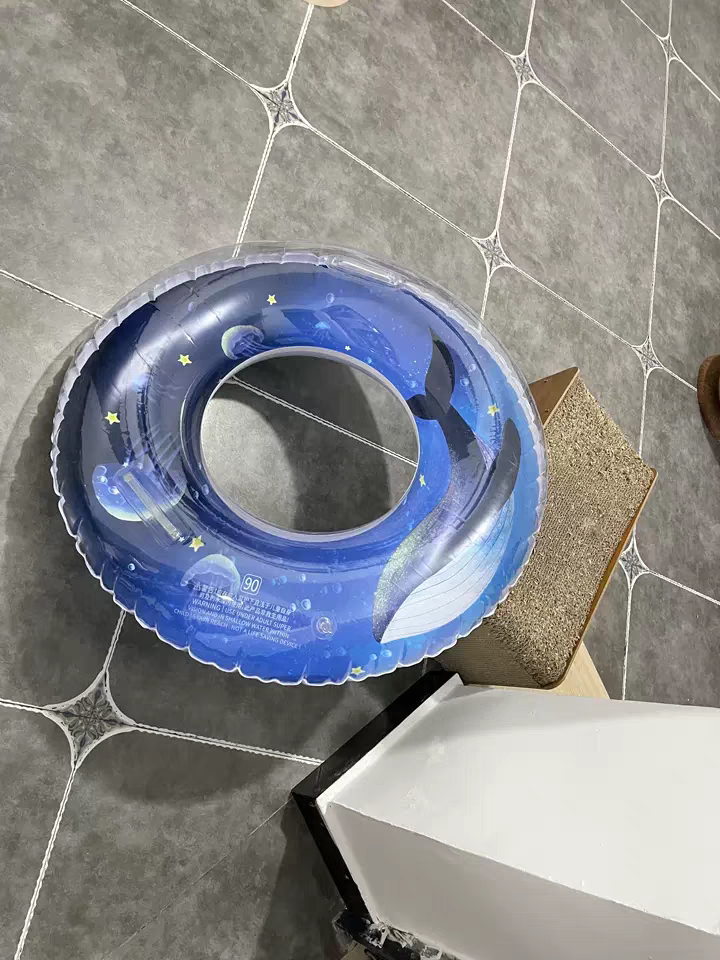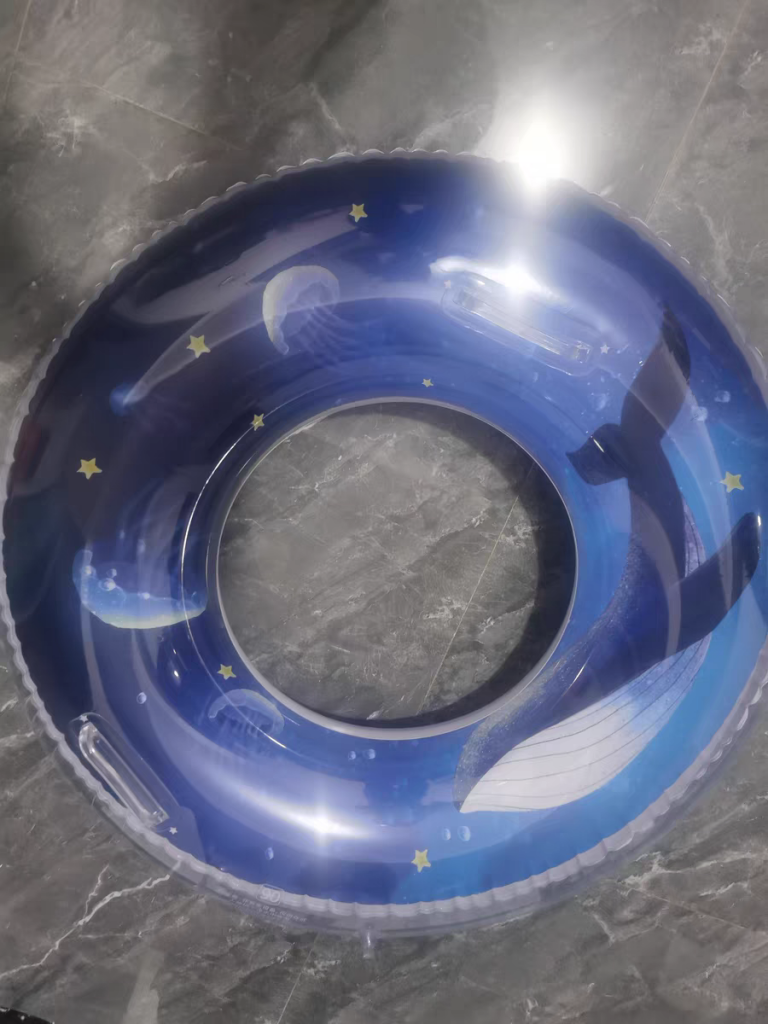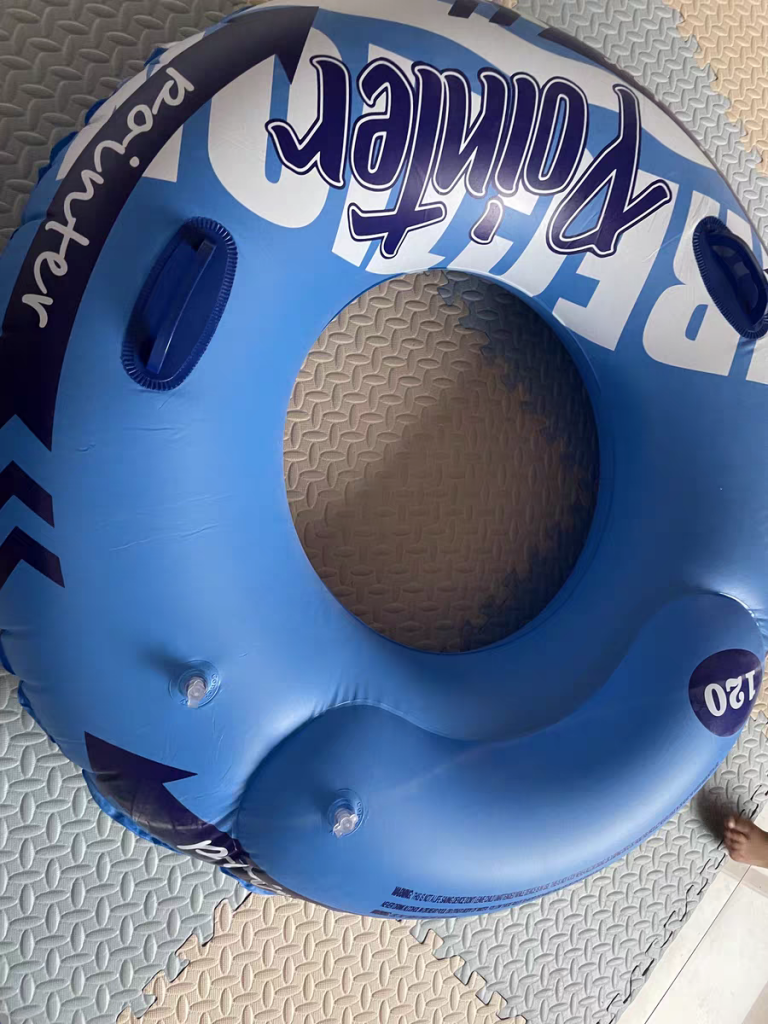The global market for swimming rings and pool floats is vast, with options ranging from ultra-budget-friendly rings to premium, designer models. For buyers—whether retailers, brands, or bulk purchasers—navigating price differences can feel overwhelming. Why does one inflatable ring cost $5, while another sells for $20? Behind every price tag lies a story of materials, craftsmanship, safety standards, and long-term value. As a leading swimming ring manufacturer, we believe transparency in pricing helps build trust. Let’s break down the key factors that shape the cost of quality pool floats.
—
1. Materials: The Foundation of Durability and Safety
The type of material used is often the single largest driver of price. Swimming rings are typically made from PVC (polyvinyl chloride) or TPU (thermoplastic polyurethane), with significant differences in quality:
– Basic PVC: Affordable but less durable. Low-cost rings often use thin, non-food-grade PVC that may crack after prolonged sun exposure or rough use. While these meet basic inflation needs, they lack UV resistance and can leach chemicals over time—posing risks in chlorinated or saltwater pools.
– Premium PVC/TPU: Higher-priced floats use food-grade, phthalate-free PVC or TPU. These materials are thicker, more flexible, and resistant to fading, punctures, and chemical degradation. TPU, in particular, offers superior elasticity, making it ideal for large or custom-shaped rings. For example, a family-sized lounging float made with TPU may cost 2–3x more than a basic PVC ring, but it lasts 3–5 times longer.
Factories that prioritize safety (e.g., passing CE, ASTM, or EN71 certifications) invest in premium materials, which directly impacts pricing. Cheaper alternatives often skip these certifications, cutting corners on material quality to reduce costs.
—
2. Craftsmanship: Precision Engineering for Longevity
How a swimming ring is made matters as much as the materials used. Inexpensive rings are often mass-produced with minimal oversight, leading to weak seams, uneven inflation, or air leaks. Conversely, higher-priced floats undergo meticulous craftsmanship:
– Reinforced Seams: Double-stitched or heat-welded seams prevent air leakage. A single weak seam can render a ring unusable after a few uses, so factories using automated welding machines (rather than hand-gluing) incur higher labor and equipment costs.
– Reinforced Handles/Attachments: Rings with built-in handles or loops for towels require extra material and stitching. These features add convenience but also increase production time and cost.
– Mold Design: Custom molds for unique shapes (e.g., animal-themed rings or oversized loungers) require significant upfront investment. Factories that design and produce their own molds pass these costs into the final product—but they also ensure consistency across batches.
A $8 ring might have glued seams and a generic shape, while a $15 ring uses laser-cut, heat-welded seams and a patented mold design—resulting in a product that stays inflated longer and withstands rough play.
—
3. Safety and Compliance: The Hidden Cost of Trust
International buyers often overlook the cost of safety certifications, but they are a critical part of pricing. To sell in markets like the EU, USA, or Australia, factories must test products against strict standards:
– Material Testing: Ensuring PVC/TPU is free from harmful chemicals (e.g., lead, phthalates) requires lab analysis, which can cost hundreds per batch.
– Structural Testing: Pressure resistance checks (to ensure rings hold air), tensile strength tests (to prevent tears), and UV resistance tests (to simulate sun exposure) add both time and expense.
– Certification Fees: Obtaining CE, ASTM, or CPSC certifications involves audits, documentation, and third-party evaluations—costs that are often passed to buyers.
A budget ring might skip these steps, but it also risks failing in the market or harming a buyer’ reputation. For factories, investing in compliance is non-negotiable to build long-term trust with clients.
—
4. Customization: Value Beyond the Basics
In today’s competitive market, buyers often seek more than “just a ring”—they want branding, unique designs, or specialized features. Customization significantly impacts pricing, but it also unlocks higher profit margins for retailers:
– Branding: Printing a logo, pattern, or label adds a layer of design work and materials (e.g., eco-friendly inks). Small-batch customizations may cost 10–20% more than unbranded rings, but they allow brands to stand out on shelves.
– Design Complexity: A simple round ring is cheaper to produce than a hexagonal “puzzle” float or a ring with built-in cup holders. Each unique feature requires custom tooling or molds, increasing upfront costs.
– Packaging: Retail-ready packaging (e.g., color-printed boxes, hang tags) adds to the final price but enhances shelf appeal. Factories that offer tailored packaging services cater to brands prioritizing presentation.
While a generic white ring might sell for $3, a customized, branded float with a unique shape could retail for $12—offering the buyer a 300% markup.
—
5. Volume and Partnerships: Economies of Scale
For bulk buyers, volume is a powerful lever to reduce per-unit costs. Factories optimize production lines for large orders, spreading fixed costs (e.g., mold setup, labor) across thousands of units. However, small orders often incur higher per-unit costs due to setup fees and inefficiencies.
That said, trusted long-term partnerships can unlock additional savings. Factories working with recurring buyers may offer:
– Volume Discounts: Lower prices for orders exceeding 10,000 units.
– Flexible MOQs: Reduced minimum order quantities for trusted clients.
– Streamlined Logistics: Negotiated freight rates or warehouse partnerships to lower shipping costs.
A retailer ordering 5,000 rings might pay $6 each, while a wholesaler ordering 50,000 could secure them for $4.50—thanks to economies of scale and shared production planning.
—
Why Price Shouldn’t Be the Only Factor
Choosing a swimming ring based solely on price can backfire. A $2 ring might save money upfront but lead to high return rates, customer complaints, or reputational damage if it deflates or breaks. Conversely, a $12 ring with premium materials and certifications may cost more initially but delivers long-term value through durability, safety, and customer satisfaction.
As a factory, our goal is to balance affordability with reliability. We invest in quality materials, automated production, and rigorous testing to ensure our rings meet international standards—without inflating prices unnecessarily. For buyers, this means accessing durable, certified products that compete effectively in their markets.
—
Conclusion
Swimming ring pricing reflects a blend of materials, craftsmanship, safety, customization, and volume. While budget options exist, they often sacrifice longevity and safety. For buyers seeking a true partner, factories that prioritize transparency, quality, and innovation deliver pricing that aligns with long-term value.
When evaluating suppliers, look beyond the price tag—ask about material certifications, production processes, and customization options. The right factory will help you choose a product that balances cost and quality, ensuring your customers return for more.
Article link:https://www.vlefooena.com/manufacturer/4491/




No reply content